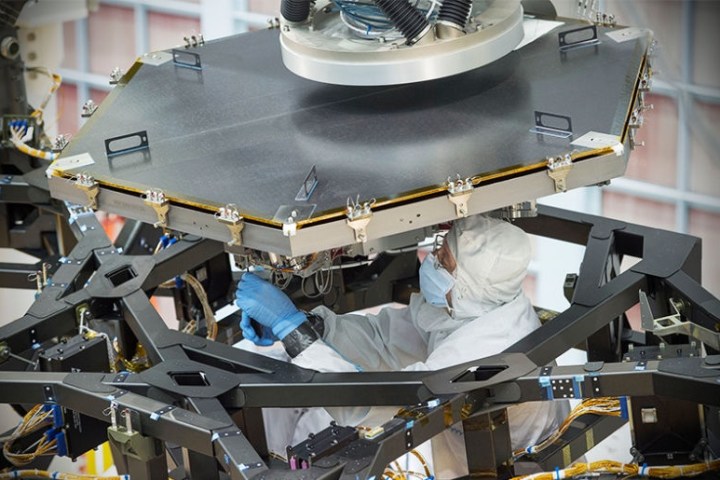
The hexagonal shaped mirror was installed on the JWST using a robotic arm inside a clean room at NASA’s Goddard Space Flight Center in Greenbelt, Maryland. Built by Colorado-based Ball Aerospace & Technologies, each mirror measured 4.2 feet wide and weighed 88 pounds. The mirrors are comprised of a lightweight beryllium material with a gold coating to reflect infrared light. All materials were selected specifically for their ability to operate at extreme temperatures as low as minus 406 degrees Fahrenheit. When all 18 mirrors are installed, the telescope will function as one large 21.3 foot (6.5 meter) mirror that will fold for launch and then unfold and adjust to shape after it is deployed.
The JWST will expand upon the observations of both the Hubble Telescope and Spritzer Space telescope. It is being heralded as “the premier astronomical observatory of the next decade.” Unlike the Hubble which measures visible or ultraviolet light, the JWST will focus instead on infrared and near-infrared light astronomy. It will provide detailed information on the first stars and galaxies that formed after the Big Bang and will give astronomers an opportunity to study planetary and stellar formation. Astronomers hope to use the data collected from the JWST to learn more about the development of our solar system as well as possibly discover other solar systems and exoplanets similar to the Earth that are capable of supporting life.
The James Webb Space Telescope is being developed as part of a collaborative international effort that is lead by NASA along with contributions from the European Space Agency (ESA) and the Canadian Space Agency.
Editors' Recommendations
- Swatch lets you put a stunning Webb space image on a watch face
- James Webb’s mirrors are almost, but not quite, cooled
- James Webb Space Telescope has gone cold, but that’s good
- James Webb’s MIRI instrument about to face most daunting challenge yet
- Three of James Webb’s four instruments are now aligned




